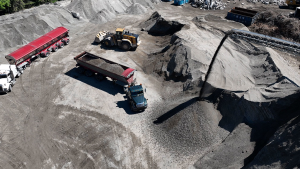The newest COVID-related challenge buffeting Canada’s construction sector is not keeping workers safe or creating vaccine policies but rather it’s properly pricing risks in a world of inflated costs and unpredictable supply chains.
The Canadian Institute (CI) assembled three legal and claims experts Feb. 24 for a panel titled Managing Your Projects, COVID-Related Risks and Delays.
Andre Brace, senior director of construction solutions for FTI Consulting, Sahil Shoor, partner with Gowling WLG, and Robert Poole, senior managing director with FTI, highlighted best practices in an online session moderated by conference co-host Howard Krupat, partner with DLA Piper.
“To me, the biggest challenge now related to COVID in particular is really relating to claims, contracts and pricing of work. I think those are real challenges that organizations on both the owner and the contractor side are going to face,” Poole stated, noting numerous complex COVID disputes in the sector as owners and contractors wade through delay and productivity issues.
“Disentangling all of that is going to be a major challenge. So my view is, the challenges going forward are more related to the practical side, the claims side, and less on the actual impacts of COVID.”
As claims pile up, the panellists said, it is more essential than ever to ensure high-quality record-keeping. Concerted efforts must be made to ensure there are corporate resources available to undertake those record-keeping and disentanglement efforts.
The resources needed to prepare the claims “don’t come out of thin air,” Poole said. “It needs a lot of work to prepare and analyze claims or to consider them whether or not they are actually substantiating the claims that are made…and at the same time you’ve got your regular business you’re supposed to be doing.”
The hiring of claims experts need not increase the adversarial nature of dealing with a COVID-related dispute, Poole said.
Their forensic approach is effective in demonstrating true COVID-related causes and effects, and attempts to reconcile losses. Methods used include delay analysis and loss-of-productivity analysis including industry studies and project benchmarking.
“My suggestion is, very often it’s in the interests of clients on both the owner and the contractor side to really appoint legal and claims experts who know how these claims should be prepared and substantiated,” said Poole.
“Then the second thing is, I’ve got a really strong opinion about working collaboratively.”
Krupat noted there has been a willingness to collaborate on disputes.
“Especially about a year into the pandemic, there was a strong willingness on the part of both owners and contractors to negotiate their way through these claims rather than to resort to a formal dispute-resolution process,” he said. “I’ve seen some very positive results through mediations.”
The better the records, Brace said, the better the analysis that can be done.“One of the things that I have found, particularly having spent a lot of my career working in projects, is that we know where to look in many cases, especially with COVID claims that can be very complex, and we’ll have to push the boundaries of typically where we find the information.”
Onsite personnel issues adding to costs are well understood by now and include absenteeism, refusal to work and mental health impacts, Brace said.
“Even if they’re working at 100-per-cent productivity or the planned productivity levels, if you’ve got half the people, you’re not going to achieve the schedule and the overall project completion that you’re expecting,” said Brace.
“At the start of the shift, before even starting to do productive work, we’re doing these new activities that are separate and distinct from the actual time loss or productivity loss that’s happening.”
Supply chain issues can have many causes and now there are political protests at borders, Poole noted.
“There’s tons of potential for things to go wrong. It’s quite amazing that more things do not go wrong,” he said. “We’ve seen these closing borders, restrictions on movements of goods or whether it’s just supply chain, or manufacturing plants having a problem with labour.”
It all adds up to a greater onus on estimators and drafters of contracts to strive for improved contracts that more carefully incorporate all possible risks, Shoor said.
“What you should be doing, the first step in my respectful view, is you should be looking at the contract in question as to what steps you can and cannot take to mitigate the risk and damage in advance of that event actually taking place,” he said, noting that “foreseeability” is an increasingly important concept.
“Be proactive in terms of how better you can have the ability to meet the contract obligations, thinking about it routinely and planning it accordingly.”
Follow the author on Twitter @DonWall_DCN.











Recent Comments
comments for this post are closed